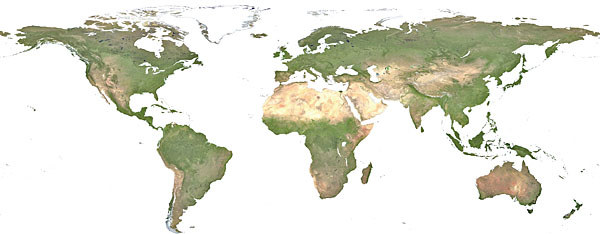|
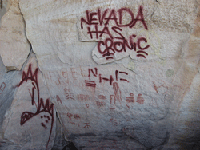 NEVADA: In the world of graffiti writers, location is important—tagging an inaccessible or notable site is an achievement. This spirit often leads to serious damage. In a recent incident, a vandal covered three panels of ancient Native American pictographs at Red Rock Canyon with maroon spray paint. It's the worst damage the site has seen in years, and cleanup may cost upwards of $10,000. The suspect the police have identified may face federal charges.
NEVADA: In the world of graffiti writers, location is important—tagging an inaccessible or notable site is an achievement. This spirit often leads to serious damage. In a recent incident, a vandal covered three panels of ancient Native American pictographs at Red Rock Canyon with maroon spray paint. It's the worst damage the site has seen in years, and cleanup may cost upwards of $10,000. The suspect the police have identified may face federal charges.
(Photo: Courtesy Bureau of Land Management)
 VIRGINIA: An encrypted message in a bottle dating to the Civil War has been removed and deciphered by codebreakers. "You can expect no help from this side of the river," began the unsigned message, which is in a museum collection. It was meant for Confederate Lt. Gen. John C. Pemberton, in response to his request for aid during the Siege of Vicksburg in Mississippi. But the note never reached his hands—it was dated July 4, 1863, the date he surrendered to Ulysses S. Grant.
VIRGINIA: An encrypted message in a bottle dating to the Civil War has been removed and deciphered by codebreakers. "You can expect no help from this side of the river," began the unsigned message, which is in a museum collection. It was meant for Confederate Lt. Gen. John C. Pemberton, in response to his request for aid during the Siege of Vicksburg in Mississippi. But the note never reached his hands—it was dated July 4, 1863, the date he surrendered to Ulysses S. Grant.
(Photo: Alan Thompson; Courtesy Museum of the Confederacy)
 ENGLAND: Silk inside and black velvet outside, this rare 16th-century vizard, or mask, would have been worn to hide or protect a gentlewoman's face while traveling. The small white thread by the mouth was once attached to a bead, also found with the mask, that she would have held in her mouth to keep the mask in place. It was secreted away in a stone wall, perhaps as a "witch deposit," a common practice for warding off maleficent forces.
ENGLAND: Silk inside and black velvet outside, this rare 16th-century vizard, or mask, would have been worn to hide or protect a gentlewoman's face while traveling. The small white thread by the mouth was once attached to a bead, also found with the mask, that she would have held in her mouth to keep the mask in place. It was secreted away in a stone wall, perhaps as a "witch deposit," a common practice for warding off maleficent forces.
(Photo Courtesy the Portable Antiquities Scheme)
 SPAIN: In 1994, the jumbled remains of several Neanderthals were found in a cave called El Sidrón. Scientists recently determined there were 12 individuals—six adults and six children—and that they were massacred together and cannibalized. The gruesome scene is also providing some of the first detailed evidence of Neanderthal social structure. Mitochondrial DNA shows that they were a family—the three adult males were related, though the three females were not. This suggests that Neanderthals were patrilocal—females left their own families to join their mates.
SPAIN: In 1994, the jumbled remains of several Neanderthals were found in a cave called El Sidrón. Scientists recently determined there were 12 individuals—six adults and six children—and that they were massacred together and cannibalized. The gruesome scene is also providing some of the first detailed evidence of Neanderthal social structure. Mitochondrial DNA shows that they were a family—the three adult males were related, though the three females were not. This suggests that Neanderthals were patrilocal—females left their own families to join their mates.
(Photo Courtesy El Sidrón research team)
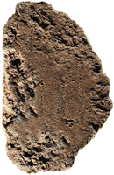 AUSTRALIA: Grinding the edge of a stone tool can make it sharper and last longer. In a rock shelter archaeologists discovered the world's oldest known ground-edge tool, a basalt axe from 35,000 years ago. It predates the next oldest examples by at least a few thousand years and promises new insights into the evolution of human behavior and technological advancement.
AUSTRALIA: Grinding the edge of a stone tool can make it sharper and last longer. In a rock shelter archaeologists discovered the world's oldest known ground-edge tool, a basalt axe from 35,000 years ago. It predates the next oldest examples by at least a few thousand years and promises new insights into the evolution of human behavior and technological advancement.
(Photo Courtesy Steve Morton, Monash University)
|
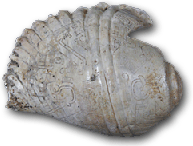 PERU: Acoustic scientists have resurrected the ancient, booming sound of decorated shell trumpets from Chaví n de Huántar by playing the 2,500-year-old pre-Inca instruments. They also used computers to simulate the acoustic properties of the site's ceremonial center and found that the sound from a shell trumpet—20 were found at the site—could have created sensory disorientation that might have been used in rituals or to enforce social hierarchy.
PERU: Acoustic scientists have resurrected the ancient, booming sound of decorated shell trumpets from Chaví n de Huántar by playing the 2,500-year-old pre-Inca instruments. They also used computers to simulate the acoustic properties of the site's ceremonial center and found that the sound from a shell trumpet—20 were found at the site—could have created sensory disorientation that might have been used in rituals or to enforce social hierarchy.
(Photo: Jyri Huopaniemi; Courtesy Center for Computer Research in Music and Acoustics, Stanford University)
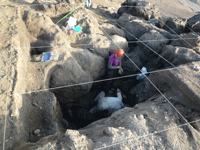 CHILE: The country's mining industry—brought to the world's attention during last year's dramatic rescue of trapped miners—began some 12,000 years ago, when the Huentelauquen people mined iron oxides as pigments. Their recently discovered mine, which is estimated to have produced 50 tons of pigment over 8,000 years, is the oldest securely dated mine in the Americas.
CHILE: The country's mining industry—brought to the world's attention during last year's dramatic rescue of trapped miners—began some 12,000 years ago, when the Huentelauquen people mined iron oxides as pigments. Their recently discovered mine, which is estimated to have produced 50 tons of pigment over 8,000 years, is the oldest securely dated mine in the Americas.
(Photo Courtesy Diego Salazar; University of Chile)
 ISRAEL: During the construction of a mikveh, or ritual bath, in Jerusalem's Jewish Quarter, archaeologists found an older bathing pool, built and used by the Roman Tenth Legion. The troops were garrisoned there after A.D. 135, when the Roman city of Aelia Capitolina was established following Hadrian's destruction of the old city. The location of the find supports an emerging theory that Aelia Capito-lina was larger than previously thought.
ISRAEL: During the construction of a mikveh, or ritual bath, in Jerusalem's Jewish Quarter, archaeologists found an older bathing pool, built and used by the Roman Tenth Legion. The troops were garrisoned there after A.D. 135, when the Roman city of Aelia Capitolina was established following Hadrian's destruction of the old city. The location of the find supports an emerging theory that Aelia Capito-lina was larger than previously thought.
(Photo Courtesy Israeli Antiquities Authority)
 EGYPT: A 25,000-square-mile lake—one of the largest in the world if it existed today—once waxed and waned in southern Egypt, 250 miles from the Nile. Detected using data generated by a space shuttle mission, Tushka Lake existed at various sizes from 250,000 to 80,000 years ago. It would have been directly in the path of the first modern humans migrating out of Africa, so its ancient shorelines may help guide archaeological investigation.
EGYPT: A 25,000-square-mile lake—one of the largest in the world if it existed today—once waxed and waned in southern Egypt, 250 miles from the Nile. Detected using data generated by a space shuttle mission, Tushka Lake existed at various sizes from 250,000 to 80,000 years ago. It would have been directly in the path of the first modern humans migrating out of Africa, so its ancient shorelines may help guide archaeological investigation.
(Photo Courtesy Ted Maxwell, Smithsonian)
 CHINA: Excavators discovered the world's oldest soup near the famed terracotta army of Xian. Now cloudy and green from the bronze cooking vessel in which it was sealed, the bone soup, surprisingly still in liquid form, was found in a tomb dating to the Warring States period (475-221 B.C.), alongside a vessel that may have held wine. Researchers are now trying to discover the recipe.
CHINA: Excavators discovered the world's oldest soup near the famed terracotta army of Xian. Now cloudy and green from the bronze cooking vessel in which it was sealed, the bone soup, surprisingly still in liquid form, was found in a tomb dating to the Warring States period (475-221 B.C.), alongside a vessel that may have held wine. Researchers are now trying to discover the recipe.
(Photo Courtesy Imaginechina)
|

